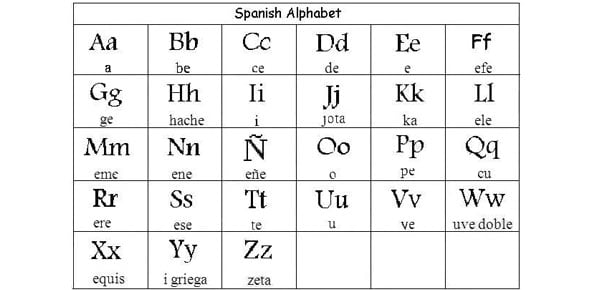Progressive In Spanish Language
-
What does this sentence mean: Ana y yo estabamos cocinando?
-
Anna and I are cooking.
-
Anna and I were cooking.
-
Anna and I cook.
-
You think you know all about in Spanish language? Simply take this quiz test and prove yourself!

Quiz Preview
- 2.
How would you say "I was dancing" using past progressive?
-
Estabamos correindo
-
Estas correindo.
-
Estaba correindo.
Correct Answer
A. Estaba correindo.Explanation
The correct answer is "Estaba correindo." This is the correct way to say "I was dancing" using the past progressive tense in Spanish. The verb "estar" is conjugated in the past tense form "estaba" to indicate the ongoing action, and the verb "correindo" is the gerund form of the verb "correr" (to dance).Rate this question:
-
- 3.
What does this sentence mean: Estaba viviendo en Mexico?
-
I was living in Mexico.
-
I'm living in Mexico.
-
I will live in Mexico.
Correct Answer
A. I was living in Mexico.Explanation
The sentence "Estaba viviendo en Mexico" is in the past tense, indicated by the verb "estaba" (was) and the gerund form "viviendo" (living). Therefore, the correct answer is "I was living in Mexico," as it accurately reflects the past continuous action of living in Mexico.Rate this question:
-
- 4.
What does this sentence mean: Juan estaba arreglando la tele?
-
Juan was buying the TV.
-
Juan was fixing the TV
-
Juan was hitting the TV.
Correct Answer
A. Juan was fixing the TVExplanation
The sentence "Juan estaba arreglando la tele" means "Juan was fixing the TV." This implies that Juan was repairing or adjusting the television, not buying or hitting it.Rate this question:
-
- 5.
How would you say: Maria was running in past progressive?
-
Maria estas corriendo.
-
Maria estaba corriendo.
-
Maria estaba comiendo.
Correct Answer
A. Maria estaba corriendo.Explanation
The correct answer is "Maria estaba corriendo" because the phrase "estaba corriendo" is in the past progressive tense in Spanish, which indicates an ongoing action in the past. The verb "estaba" is the past tense of the verb "estar" (to be) and "corriendo" is the present participle of the verb "correr" (to run). Therefore, the sentence translates to "Maria was running."Rate this question:
-
- 6.
Which ending do you use for "ar" verbs?
-
Ando
-
Er
-
Ir
Correct Answer
A. AndoExplanation
The correct answer is "ando" because the ending "ando" is used for "ar" verbs in Spanish. When conjugating verbs that end in "ar" in the present participle form (-ing form), you replace the "ar" with "ando". For example, the verb "hablar" (to speak) becomes "hablando" (speaking) in the present participle form.Rate this question:
-
- 7.
What does this sentence mean: Estaba montando?
-
I was riding.
-
I was working.
-
I was painting.
Correct Answer
A. I was riding.Explanation
The sentence "Estaba montando" translates to "I was riding" in English. It implies that the speaker was engaged in the act of riding something, such as a bike or a horse. The other options, "I was working" and "I was painting," do not accurately convey the meaning of the original sentence.Rate this question:
-
- 8.
Which ending do you use for "er/ir" verbs?
-
Lungo
-
Mundo
-
Iendo
Correct Answer
A. IendoExplanation
The correct answer is "iendo". In Spanish, the ending "iendo" is used for the present participle form of "er/ir" verbs. This form is used to express an ongoing action. For example, the verb "comer" (to eat) would become "comiendo" (eating) in the present participle form.Rate this question:
-
Quiz Review Timeline (Updated): Mar 19, 2023 +
Our quizzes are rigorously reviewed, monitored and continuously updated by our expert board to maintain accuracy, relevance, and timeliness.
-
Current Version
-
Mar 19, 2023Quiz Edited by
ProProfs Editorial Team -
Mar 06, 2016Quiz Created by
Eminy
Are You Interested To Learn Spanish?
Spanish is a fun language to learn and listen to especially if you love watching telenovelas, which are soap operas of Spanish origin. Do you have your basic Spanish language...
Questions:
8 |
Attempts:
137 |
Last updated:
Mar 20, 2023
|
Spanish Trivia: Could You Pass This Quiz?
Test your knowledge of the Spanish language with our Spanish Trivia Quiz! Covering pronunciation, alphabet differences, and vocabulary, this quiz is perfect for learners looking...
Questions:
20 |
Attempts:
436 |
Last updated:
Mar 21, 2023
|
Spanish Language Test Quiz
Spanish is one of the most loved languages in the world. Do you love Spanish too? Can you pass this Spanish language test quiz? This test is a practice placement test for the...
Questions:
10 |
Attempts:
10732 |
Last updated:
Oct 09, 2023
|
Test Your Spanish Now!
Spanish also called Castilian, is a Romance language that originated in the Castile region of Spain and today has hundreds of millions of native speakers around the world. Test...
Questions:
10 |
Attempts:
6762 |
Last updated:
Mar 21, 2023
|
Spanish Language Quiz For Beginners!
Welcome to the Spanish Language Quiz for Beginners! This quiz is specially designed for those who are new to the beautiful world of Spanish. Challenge yourself with questions...
Questions:
10 |
Attempts:
19284 |
Last updated:
Jun 28, 2025
|
Bored Or Boring? Fix It Fast With This Participial Adjectives Quiz
You’re writing an email or essay, trying to sound polished—and then it hits. Should you say “interested audience” or “interesting audience”?...
Questions:
10 |
Attempts:
41 |
Last updated:
Jun 03, 2025
|
 Back to top
Back to top








